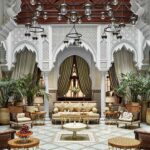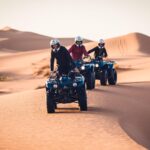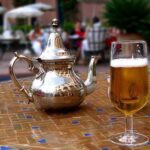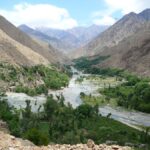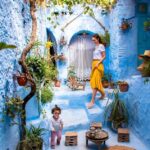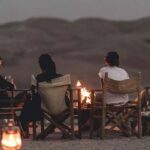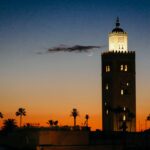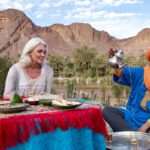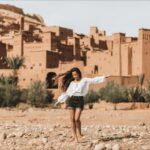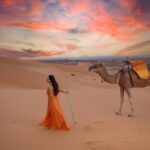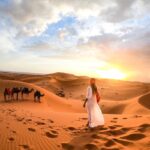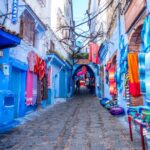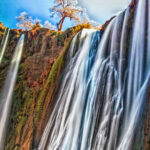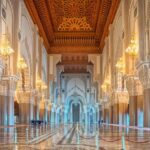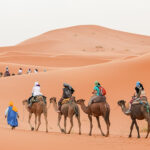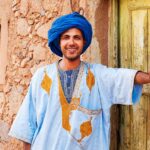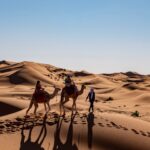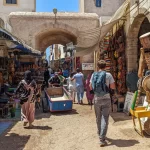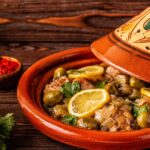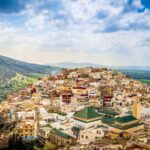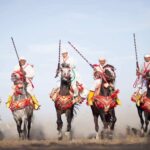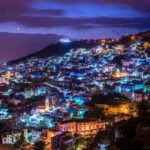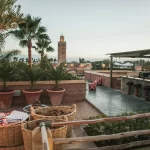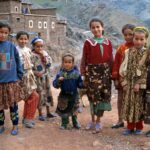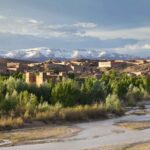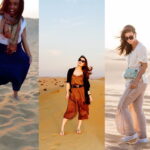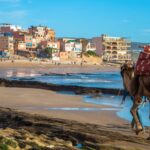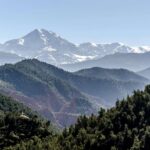Morocco, a country where the Atlas Mountains meet the endless desert and the Atlantic Ocean, is renowned for its breathtaking landscapes, rich history, and vibrant culture. Among the many festivals celebrated here, Eid Al Fitr holds a special place, marking the end of Ramadan, the Islamic holy month of fasting. This festival is not just a religious observance but a nationwide celebration of gratitude, community, and renewal. For travelers, Eid Al Fitr presents an extraordinary opportunity to witness the depth of Morocco’s traditions and the warmth of its people. But what should every traveler know about traveling to Morocco during Eid Al Fitr?
Table of contents
Understanding Eid Al Fitr
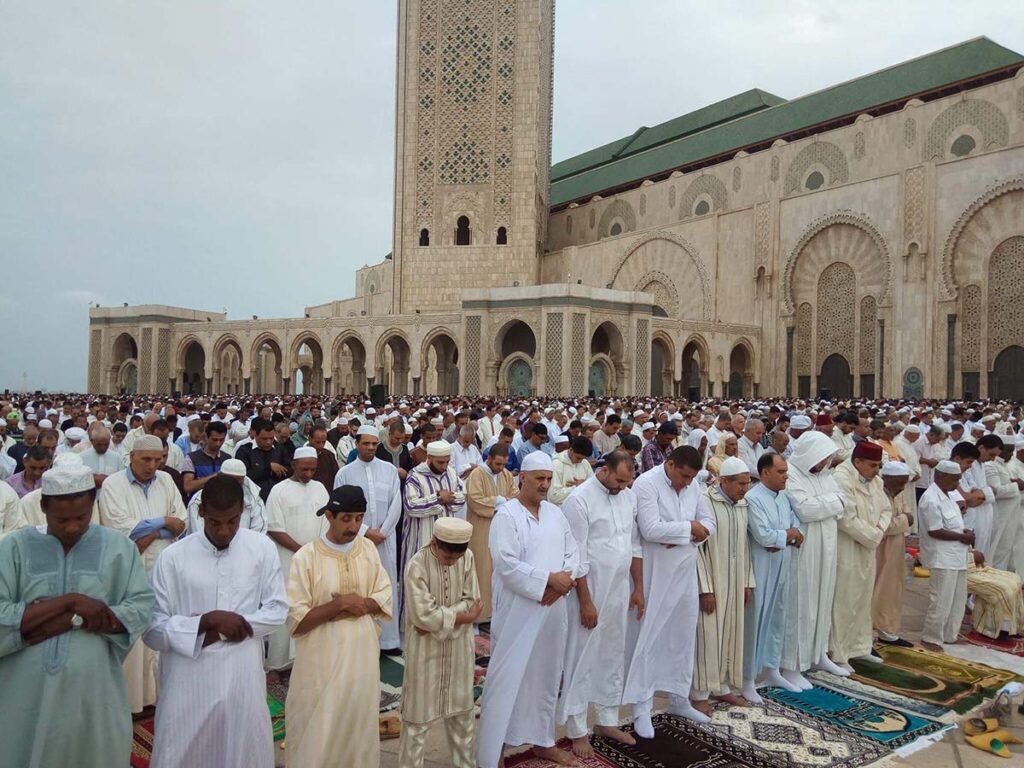
Historical and Cultural Significance
Eid Al Fitr, which translates to the “Festival of Breaking the Fast,” is celebrated by Muslims around the world but takes on unique characteristics in each country. In Morocco, it is deeply interwoven with the nation’s culture and history, reflecting centuries of traditions and the Moroccan people’s profound sense of community and hospitality.
Traditions and Practices during Eid Al Fitr in Morocco
The celebration begins with the sighting of the new moon, signaling the end of Ramadan. The following day, Moroccans engage in a special communal prayer at mosques or designated prayer areas. The air is filled with a sense of joy and togetherness, with greetings of “Eid Mubarak” (Blessed Eid) exchanged among all. Families and friends gather for a festive meal, which often includes traditional Moroccan dishes, signifying the end of a month of fasting.
Before Your Trip
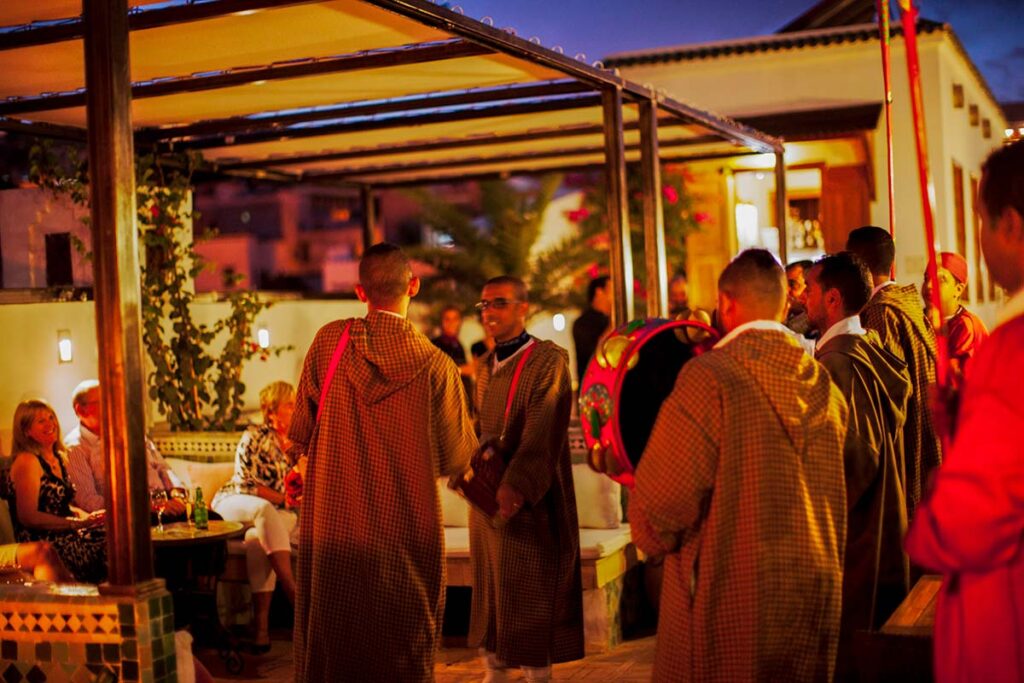
Planning Your Visit: Timing and Duration
Eid Al Fitr in Morocco for the year 2024 is anticipated to occur on April 10th to April 11th. This Islamic festival’s timing is based on the lunar calendar, causing its dates to vary each year. Travelers looking to experience Eid Al Fitr in Morocco should plan their visit around these dates, considering arrival a few days earlier to fully immerse in the pre-festival preparations and celebrations.
An important consideration for travelers is the availability of Morocco desert tour services during Eid Al Fitr. Many staff members, including guides and drivers, prefer not to work during the Eid Day, especially in the morning. This is a special time reserved for attending Eid prayers and celebrating with family gatherings. It is a deeply rooted tradition and a reflection of the importance of family and community in Moroccan culture. As such, tour operations may be limited, or services may start later in the day.
By the afternoon of Eid, normal daily routines gradually resume, and some tour services may become available again. However, it’s advisable to plan for a day of independent exploration or relaxation, enjoying the local festivities and giving space to those celebrating Eid with their loved ones. This adjustment in plans not only respects the local customs but also offers travelers the chance to immerse themselves in the Eid atmosphere more authentically.
To navigate this, consider the following tips:
• Communicate Early: If you’re planning day tours or needing transportation on or around Eid, discuss your plans with service providers well in advance. They can advise you on the best times for your activities or suggest alternatives.
• Flexible Itinerary: Keep your schedule flexible to accommodate the slower pace of life during Eid and the limited availability of tours and public transportation.
• Experience Local Traditions: Use any downtime to participate in or observe local Eid traditions. This might be the perfect opportunity to witness the communal prayers, explore festive markets, or simply enjoy the special atmosphere in the streets.
By aligning your travel plans with the observance of Eid Al Fitr in Morocco, you can ensure a more enriching and respectful experience. This period offers a rare opportunity to witness the depth of Moroccan traditions and the warmth of its people, providing insights into the cultural fabric of the country that are not as easily accessible at other times of the year.
What to Pack for Eid Al Fitr in Morocco
Packing for your journey to Morocco during Eid Al Fitr necessitates a thoughtful consideration of both respect for local customs and the practicalities of weather, which, in the coming years, will coincide with the rainy and cooler season. Here’s what you should consider including in your luggage:
• Modest Clothing: For both men and women, packing clothes that cover shoulders and knees is advisable, especially when visiting mosques or participating in Eid celebrations. Modesty is valued in Moroccan culture, particularly during religious festivals.
• Layered Outfits: Given the cooler and potentially rainy weather during Eid in the coming years, bring layers that can easily be adjusted to changing conditions. This includes a mix of light fabrics for warmer parts of the day and warmer layers for the evening and early morning.
• Rain Gear: A waterproof jacket or a compact umbrella will be essential for navigating the rainy season. Waterproof footwear can also ensure comfort while exploring the cities and landscapes of Morocco during this time.
• Comfortable Footwear: Whether you’re walking through the bustling medinas or exploring the the Atlas Mountains, comfortable and durable shoes are a must. Waterproof options are preferable, considering the possibility of rain.
• Small Gifts or Sweets: If you’re invited into a Moroccan home during Eid (a likely and delightful possibility given the hospitality of Moroccans), it’s customary to bring a small gift or sweets as a token of gratitude and friendship. This gesture is highly appreciated and reflects respect for local traditions.
• Warm Accessories: For chilly mornings and evenings, pack a scarf or a shawl. These can also serve as an added layer of modesty when needed.
• Sun Protection: Despite the cooler and rainy season, the sun in Morocco can still be strong. Pack sunglasses, a hat, and sunscreen to protect against UV rays during clearer parts of the day.
• Cultural and Religious Respect Items: For those planning to visit mosques or participate in religious festivities, bringing a scarf for head covering (for women) can be important for entering religious sites.
Adjusting your packing list to accommodate both the cultural and weather-related considerations during Eid Al Fitr ensures a comfortable, respectful, and enriching travel experience in Morocco. Being prepared for the varied climate and maintaining an attitude of cultural sensitivity will open doors to deeper connections and experiences throughout your journey.
Learning Basic Moroccan Arabic Phrases
Knowing some basic Moroccan Arabic phrases can enhance your experience and help you connect with locals. Phrases like “Eid Mubarak” (Blessed Eid) and “Shukran” (Thank you) can go a long way in showing respect and appreciation for the local culture.
During Your Stay
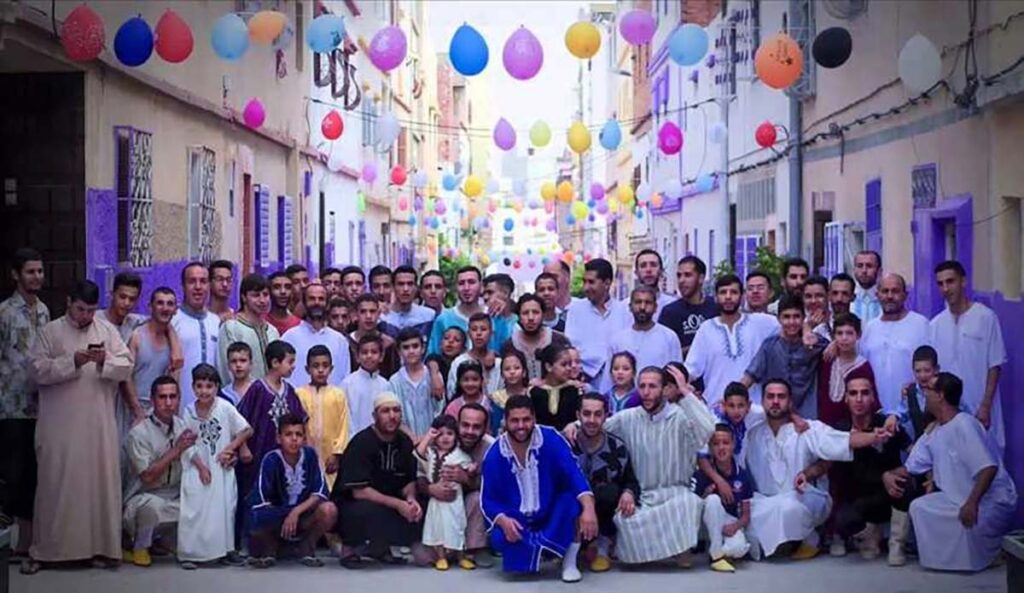
Experiencing Moroccan Hospitality
Moroccan hospitality is legendary, and during Eid Al Fitr, it shines even brighter. Travelers might find themselves invited to join a family for the Eid feast. Such invitations are a privilege, offering an intimate view of Moroccan customs and the chance to partake in delicious, home-cooked meals.
Festive Foods and Feasts
Eid in Morocco is synonymous with special foods and sweets. Pastilla, a savory pastry filled with pigeon or chicken, and couscous are often part of the Eid meal. Sweets like ma’amoul (date-filled cookies) and chebakia (sesame cookies) are also popular.
Eid Prayers and Celebrations: What to Expect
The morning of Eid Al Fitr begins with the Eid prayer, a significant and moving experience, whether you’re observing or participating. Held in large open spaces or mosques, these prayers draw vast numbers of worshippers in a display of faith and community. Travelers are welcome to observe this beautiful ritual, and it offers a profound insight into the spiritual heart of Morocco. Remember to dress modestly and keep a respectful distance from the prayer area.
Navigating Crowds and Transportation
Eid Al Fitr sees an upsurge in activity and crowds, especially in major cities and at popular tourist attractions. Public transportation can be crowded, and some services may operate on a limited schedule. Plan your travel within cities well in advance, and if possible, explore on foot to soak in the festive atmosphere. It’s also a good time to practice patience and embrace the slower pace of life that comes with the holiday festivities.
Unique Eid Traditions in Morocco
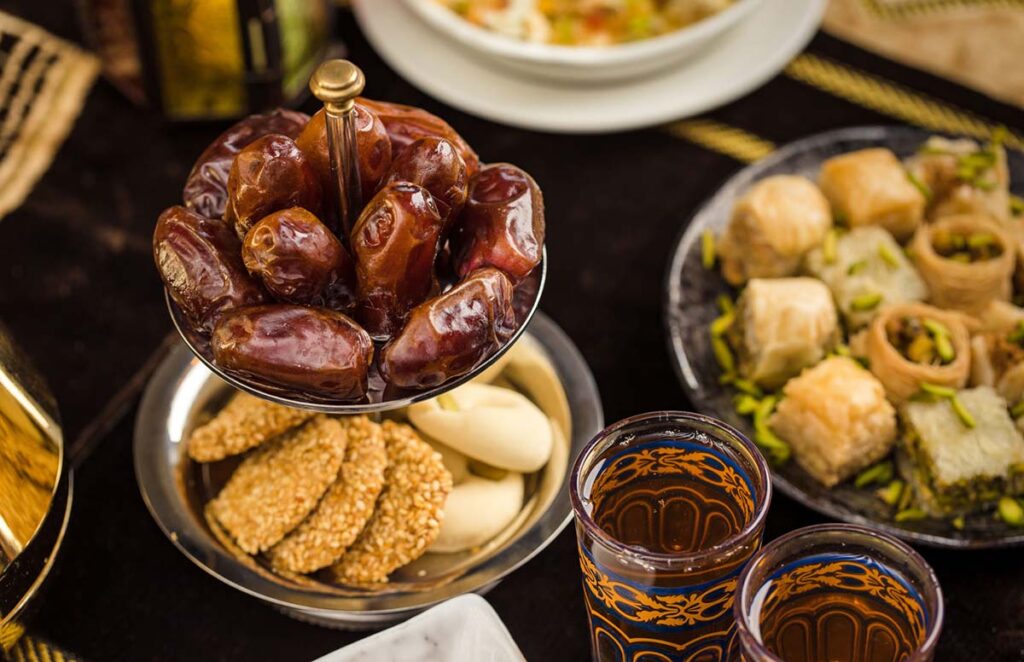
Special Foods and Sweets
Food plays a central role in the celebrations. Beyond the dishes mentioned, Eid is also an opportunity to try lamb prepared in various traditional styles, a nod to the sacrifice that is part of Eid al-Adha, yet also integrated into Eid Al Fitr celebrations in many families. Mint tea, the national drink, flows abundantly, symbolizing Moroccan hospitality and celebration.
Cultural Events and Performances
In many Moroccan cities, you’ll find cultural events and performances taking place during Eid. These might include traditional music and dance, art exhibitions, and street festivals. Such events provide a lively and engaging way to experience Morocco’s rich cultural tapestry up close.
Visiting Moroccan Homes during Eid
If you’re invited into a Moroccan home during Eid, it’s a gesture of deep respect and friendship. Bring a small gift, such as pastries or flowers, and be prepared to remove your shoes upon entering. Engage with your hosts and show interest in the traditions and the meaning behind the celebration. It’s a unique opportunity to witness the warmth and generosity that defines Moroccan culture.
Travel Tips During Eid Al Fitr
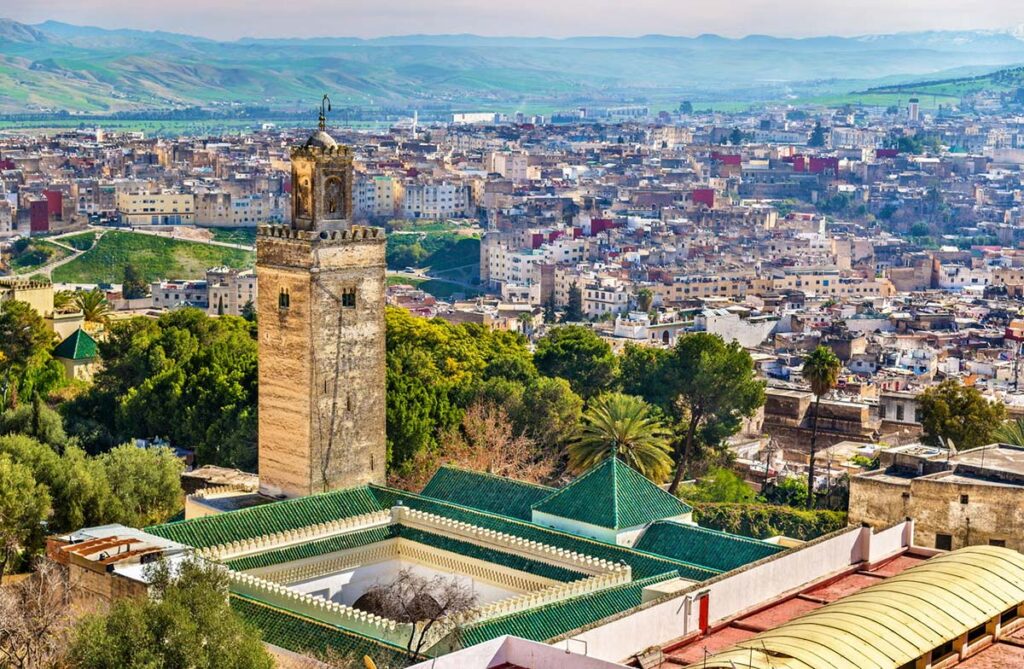
Respecting Local Customs and Dress Codes
While Morocco is a relatively liberal country, showing respect for local customs and religious practices is crucial, especially during Eid. Opt for modest clothing that covers shoulders and knees, particularly when visiting mosques or participating in Eid festivities.
Safety Tips and Scam Awareness
As with traveling anywhere, staying aware of your surroundings and keeping personal belongings secure is important. Be cautious of common tourist scams and politely decline unwanted offers or guides. Always negotiate taxi fares before the ride, and if possible, use recommended or official transport services.
Best Places to Experience Eid Celebrations
Each Moroccan city offers a unique perspective on Eid celebrations. Marrakech and Fez, with their historic Medinas and vibrant street life, offer an unforgettable backdrop to the festivities. For a more laid-back experience, the coastal cities of Essaouira and Asilah provide a serene setting to observe the holiday. Meanwhile, Chefchaouen offers a peaceful retreat with its stunning blue-washed buildings and mountainous surroundings.
Day Trips and Excursions
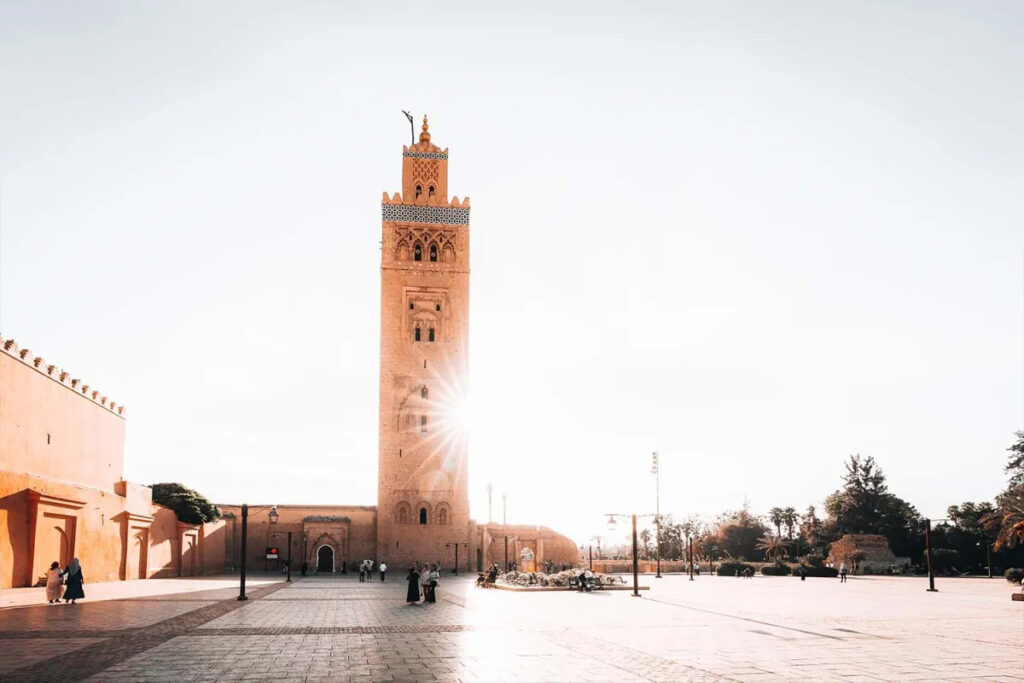
Must-visit Cities and Towns during Eid
Beyond the major cities, smaller towns and rural areas celebrate Eid with equal fervor. Taroudant, known as the “Grandmother of Marrakech,” offers a glimpse into traditional celebrations without the crowds. The mountain town of Ifrane provides a cool escape with its Alpine feel and beautiful natural landscapes.
Nature Escapes: Beaches and Mountains
Morocco’s diverse geography means you’re never far from a natural retreat. The Atlas Mountains offer breathtaking hikes and the chance to visit Berber villages, while the country’s extensive coastline boasts beautiful beaches perfect for relaxation after the hustle and bustle of Eid celebrations.
Cultural and Historical Sites
Eid is an excellent time to explore Morocco’s rich heritage, from the Roman ruins of Volubilis to the ancient Kasbahs of the Atlas. Many sites are less crowded, providing a more intimate experience.
Conclusion
Journeying through Morocco during Eid Al Fitr opens up a world of deep cultural immersion, warm hospitality, and unforgettable experiences. It’s a time when the essence of Moroccan generosity, community, and tradition shines brightest. By embracing the local customs, engaging respectfully with the culture, and opening yourself to the myriad of experiences available, you can enjoy a truly enriching travel experience that goes far beyond the typical tourist path.
Appendix
Glossary of Terms
• Eid Mubarak: A greeting used during Eid, meaning “Blessed Eid.” It is a way to wish others well during the celebration.
• Medina: The old part of a city in North African towns, often enclosed by walls. It is typically filled with narrow streets, markets (souks), and historical sites.
• Kasbah: A type of fortress or medina, often found in Moroccan cities. Kasbahs are notable for their historic and architectural significance.
• Tagine: A traditional Moroccan dish, named after the conical clay pot it’s cooked in. It consists of a slow-cooked stew, typically made with meat, poultry, or fish, along with vegetables and spices.
• Zakat: One of the Five Pillars of Islam, referring to the act of giving a set percentage of one’s wealth to charity. Zakat al-Fitr is a specific form of charity given to the poor at the end of Ramadan, before the Eid prayers.
• Msala: The outdoor area or ground where the Eid prayer is performed. This is usually a large, open space outside the mosque.
• Eid Prayer: A special prayer offered in congregation on the morning of Eid Al Fitr. It is performed in two units with additional takbirs and is followed by a sermon (khutbah).
• Ghriba: Traditional Moroccan cookies, often made during Eid and other special occasions. They are characterized by their round shape and powdered sugar coating.
• Kaftan: A long, flowing garment worn by both men and women in Morocco. It is often elaborately decorated and worn on special occasions, including Eid.
• Mint Tea: A Moroccan staple, this sweetened green tea with fresh mint is served throughout the day and is a sign of hospitality.
• Souk: A market or bazaar in the Arab world. In Morocco, souks are a maze of alleyways filled with a variety of stalls selling everything from spices and textiles to pottery and jewelry.
• Berber: Refers to the indigenous people of North Africa, with a rich cultural history and their own languages. Berber communities are particularly prominent in Morocco, where they are known for their traditional crafts and music.







